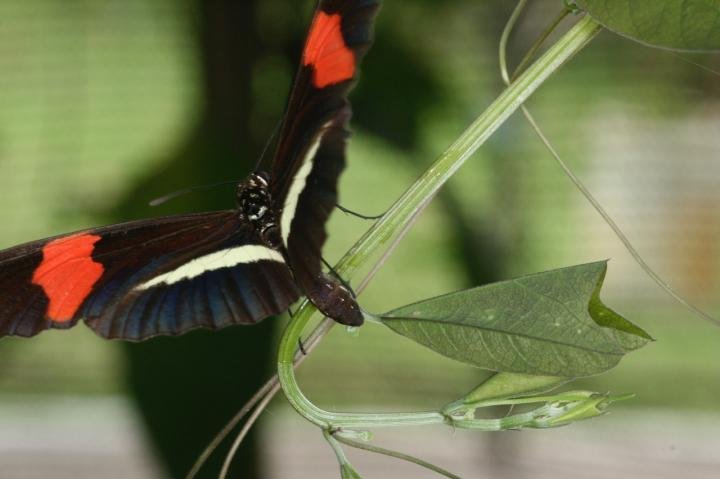The Heliconius erato prefers to lay eggs on passion flower vines with familiar leaf shapes. Photo by Denise Dell'Aglio/STRI
PANAMA CITY, Panama, July 29 (UPI) -- The evolutionary pressures of hunger, reproduction and pollination have driven a unique relationship between butterflies and plants.
To encourage the faithfulness of their winged friends, plants have sprouted an impressive diversity of leaves, which in turn has prompted impressive shape-recognition ability among butterflies.
According to scientists with the University of Cambridge and the Smithsonian Tropical Research Institute, the tropical butterfly Heliconius erato -- sometimes called the small postman or the red passion flower butterfly -- can tell flowers apart by the shape of their leaves.
Specific shapes help the small postman know which flowers are for feeding and which are ideal for laying eggs.
Passion flowers are a genus of vine with highly variable leaf shape both between and within species. In experiments with fake flowers and leaves, Heliconius erato preferred passion flowers with familiar leaf shapes for egg laying, though the species overcome this preference when necessary. For feeding, they preferred star-like flowers with three and five petals over simpler blooms, though they can easily reverse that preference for a more reliable food reward.
Over time, as eggs hatch and caterpillars feed on the plants, damaging them, the plants with rarer leaf shapes reproduce more, becoming more common, and thus more familiar, losing their reproductive advantage.
Shifts in the species' preference can drive plant biodiversity among the local flora.
Scientists call this evolutionary phenomenon "negative frequency dependence."
"Negative frequency dependence, where rare forms have an advantage, is thought to be a common process that promotes diversity in tropical plants," Chris Jiggins, professor of evolutionary biology at Cambridge, said in a news release.
Jiggins is the co-author of a new paper on the postman's relationship with passion flowers, published this week in the journal Frontiers in Ecology and Evolution.
"It is therefore exciting to think about how commonly this may be driven by behavioral flexibility in predators. Perhaps other insects might learn chemical signatures, textures or other physical cues and similarly promote diversity in their host plants."















